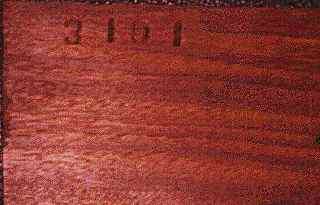
Dhaman (Grewia elastica)
Family:
Common names: Bijol-goch, Bimla, Dhaman, Dhamma, Dieng-soh-langhri-that, Dieng-tha-ballich, Gonyer, Khengkhriwakbik, Kunsun, Laiman-phang, Man-bijal, Mikir-lata-phang, Pengtarow, Pharsanyi, Pharsawon, Pharsia, Pharson, Phuhura, Pintayo, Thai-a-dou
Distributed in: India, Malaysia, Myanmar (Oceania and S.E. Asia)
Distribution overview: One of about 30 species found in India. It grows in the sub-Himalayan tract from the Indus eastwards to Bengal, in Chota Nagpur, Madhya Pradesh, Assam and Burma at elevations of up to 3000 feet (900 m) above sea level.
Common uses: Beams, Billiard-cue butts, Bobbins, Building materials, Cooperages, Door, Furniture , Furniture components, Furniture squares or stock, Handles, Oars, Poles, Rustic furniture, Shafts/Handles, Shuttles, Specialty items, Textile equipment, Tool handles, Utility furniture, Vehicle parts, Windows
Environment profile: Status has not been officially assessed
Tree size: Trunk diameter is 100-150 cm
Colors: the heart isRed, Whitishand the sapwoodWhite, Yellow.The grain isStraight, the textureMedium coarse to coarseand the lusterSomewhat lustrous
Natural durability: Resistant to termites, Susceptible to insect attack
Odor: Has an odor
Kiln Drying Rate: Slow
Drying Defects: End splitting, Warping can be expected
Ease of Drying: Slowly
Comments: Other Machining PropertiesThe timber is described as heavy, strong, very tough, and very hard.The timber responds readily to ordinary tools to yield clean surfaces, and is rather easy to work
Boring: Poor to very poor results
Carving: Fairly Easy to Very Easy
Cutting Resistance: Saws without difficulty
Mortising: Very Good to Excellent
Moulding: Fairly Easy to Very Easy
Movement in Service: Fairly Easy to Very Easy
Planing: Very Good to Excellent
Resistance to Impregnation: Responds fairly well to preservative treatment
Response to hand tools: Responds Readily
Sanding: Very Good to Excellent Results
Screwing: Fair to Good Results, Very Good to Excellent Results; Turning: Very good
Polishing: Very Good to Excellent; Varnishing: Very Good to Excellent;
- Numerical data Metric
- Numerical data English
- Strength properties
- References
 |
 |
 |
 |
| Item |
Green |
Dry |
Metric |
| Specific Gravity |
0,57 |
0,63 |
|
| Density |
|
721 |
kg/m3 |
| Bending Strength |
755 |
1077 |
kg/cm2 |
| Crushing Strength |
70 |
112 |
kg/cm2 |
| Hardness |
|
805 |
kg |
| Impact Strength |
139 |
162 |
cm |
| Shearing Strength |
|
143 |
kg/cm2 |
| Stiffness |
117 |
144 |
1000 kg/cm2 |
| Tangential Shrinkage |
10 |
|
% |
| Radial Shrinkage |
5 |
|
% |
| Weight |
913 |
705 |
kg/m3 |
| Maximum Load |
0,84 |
1,19 |
cm-kg/cm3 |
| Toughness |
|
|
cm-kg |
| Static Bending |
418 |
612 |
kg/cm2 |
|
 |  |  |  | | Item | Green | Dry | English | | Bending Strength | 10741 | 15327 | psi | | Crushing Strength | 1009 | 1607 | psi | | Density | | 45 | lbs/ft3 | | Hardness | | 1776 | lbs | | Impact Strength | 55 | 64 | inches | | Maximum Crushing Strength | 5067 | 7811 | psi | | Shearing Strength | | 2036 | psi | | Static Bending | 5958 | 8712 | psi | | Stiffness | 1673 | 2049 | 1000 psi | | Work to Maximum Load | 12 | 17 | inch-lbs/in3 | | Specific Gravity | 0.57 | 0.63 | | | Weight | 57 | 44 | lbs/ft3 | | Radial Shrinkage | 5 | | % | | Tangential Shrinkage | 10 | | % | | Volumetric Shrinkage | 16 | | % | |
Chowdhury, K.A. and S.S. Ghosh. 1963. Indian Woods - Their Identification, Properties and Uses, Volume II - Linaceae to Moringaceae. Published by the Manager of Publications, Delhi, India.Desch, H. E. 1954. Manual of Malayan Timbers - Volume II. Malayan Forest Records, No. 15. Malaya Publishing House Ltd., Singapore.Limaye, V.D.1954. Grouping of Indian Timbers and their Properties, Uses and Suitability. Indian Forest Records, New Series. Timber Mechanics, Vol. 1, No. 2, Forest Research Institute, Dehra Dun, India.Limaye, V.D. and B.R. Sen. 1953. Weights and Specific Gravities of Indian Woods. Indian Forest Records, New Series. Timber Mechanics, Vol. 1, No. 4, Forest Research Institute, Dehra Dun, India.Sekhar, A.C. and D.N. Bhatia.1957.Physical and Mechanical Properties of Woods Tested at Forest Research Institute, Report VIII.Indian Forest Records, New Series, Timber Mechanics, Volume 1, Number 9. The Manager of Publications, Delhi.Troup, R.S. 1909. Indian Woods and Their Uses. The Indian Forest Memoirs, Economic Products Series, Volume 1, No. 1. Superintendent, Government Printing, Calcutta, India.
|








